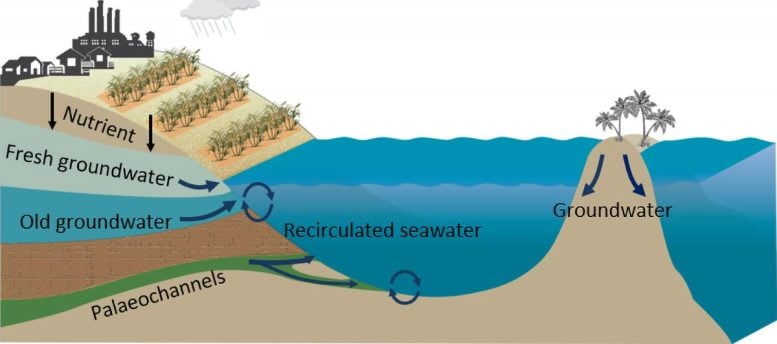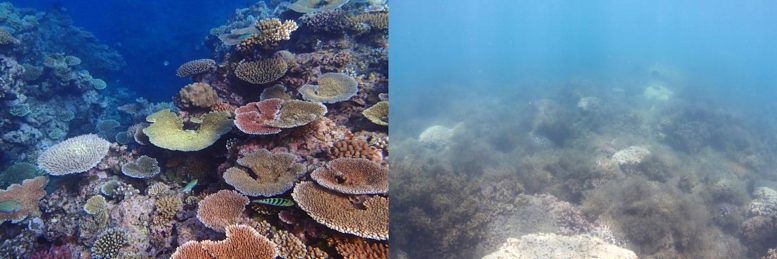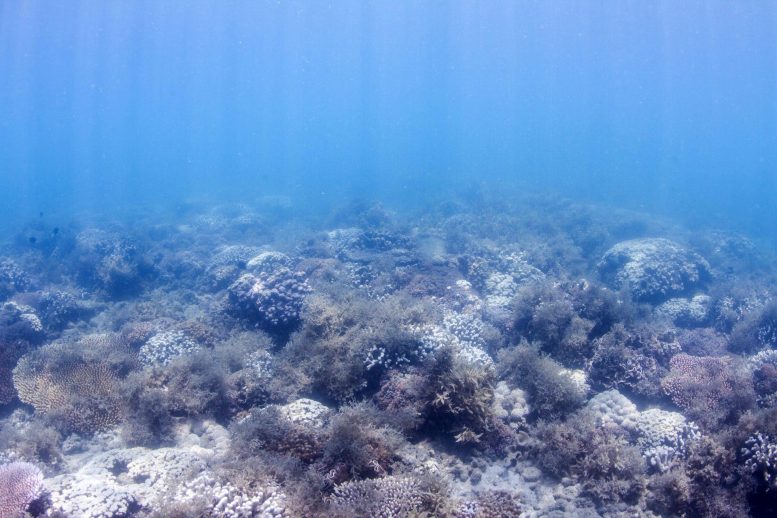
Study finds nearly twice the amount of nitrogen is entering the Reef from groundwater compared to river waters.
Scientists using natural tracers off Queensland’s coast have discovered the source of previously unquantified nitrogen and phosphorous having a profound environmental impact on the Great Barrier Reef.
The findings, published today in Environmental Science and Technology, indicate current efforts to preserve and restore the health of the Reef may require a new perspective.
Southern Cross University’s Dr. Douglas Tait leads the ground-breaking study, ‘Submarine groundwater discharge exceeds river inputs as a source of nutrients to the Great Barrier Reef’.
Submarine groundwater discharge is any water released to the ocean below the waterline from various sources, including underground aquifers and the seafloor.

Research Findings and Implications
The research team, which also includes CSIRO, AIMS, and Gothenburg University (Sweden), collected data from offshore transects, rivers, and coastal bores in an area from south of Rockhampton to north of Cairns. The use of radium isotopes allowed the scientists to track how much nutrient is transported from the land and shelf sediments via invisible groundwater flows.
Southern Cross Professor Damien Maher said the team’s work showed that groundwater discharge was 10-15 times greater than river inputs, something previously unaccounted for.
“Groundwater discharge accounted for approximately one-third of new nitrogen and two-thirds of phosphorous inputs, indicating that nearly twice the amount of nitrogen enters the Reef from groundwater compared to river waters,” Professor Maher said.
Professor Maher added that the lion’s share of efforts to mitigate the impact of nutrients on the Reef were focused on outflow from river systems.

Potential Environmental Impact and Recommendations
Lead author Dr. Douglas Tait said: “Nutrients are essential to support the incredible biodiversity of the Great Barrier Reef.”
“However, an excess of nutrients can lead to detrimental issues such as harmful algal blooms, crown-of-thorns starfish outbreaks, and fish diseases, which have been on the rise in the Reef over the past few decades.
“Our study underscores the need for a strategic shift in management approaches aimed at safeguarding the Great Barrier Reef from the effects of excess nutrients.”
Dr. Tait said unlike river outflow, nutrients in groundwater could be stored for decades underground before being discharged into coastal waters, meaning research and strategies to protect the Reef needed to be long-term.
“This study sheds new light on the complex nutrient dynamics within the Great Barrier Reef,” Dr. Tait said.
“Our understanding and ability to manage the sources of nutrients is pivotal in preserving the Reef for generations to come.”
Reference: “Submarine Groundwater Discharge Exceeds River Inputs as a Source of Nutrients to the Great Barrier Reef” by Douglas R. Tait, Isaac R. Santos, Sèbastien Lamontagne, James Z. Sippo, Ashley McMahon, Luke C. Jeffrey and Damien T. Maher, 8 October 2023, Environmental Science & Technology.
DOI: 10.1021/acs.est.3c03725
The project was supported with funding from the Australian Research Council, the Herman Slade Foundation, and the Great Barrier Reef Foundation.
1 Comment
How does that fit with the claim that global warming sea surface temperatures are the threat to the coral reefs?